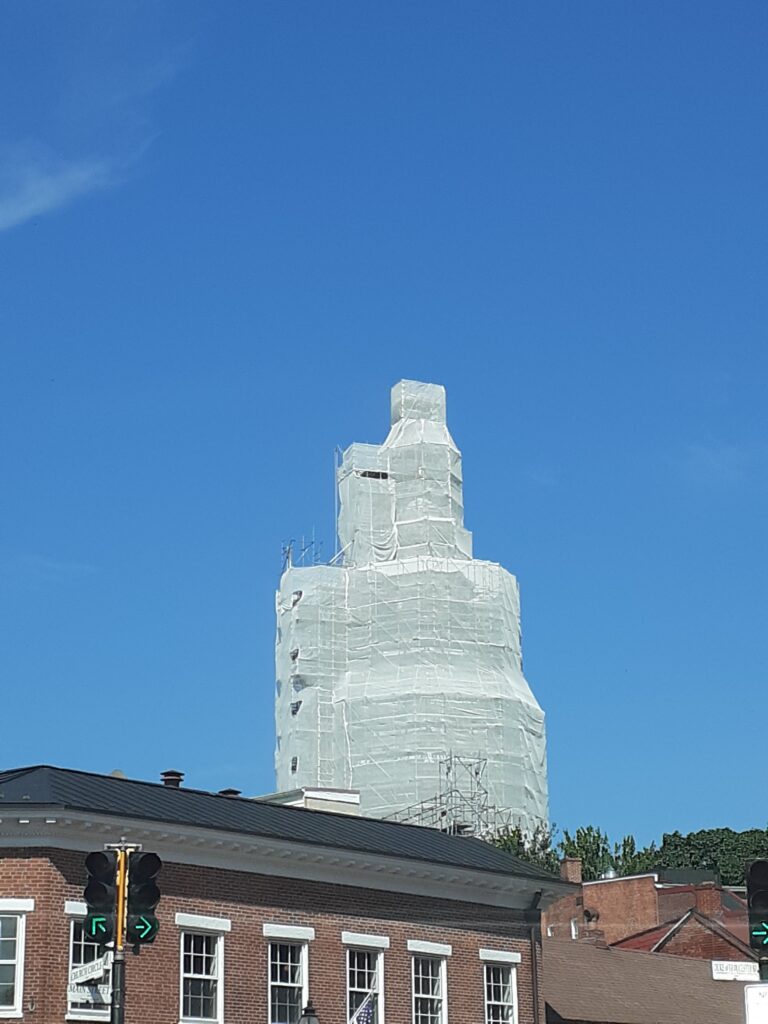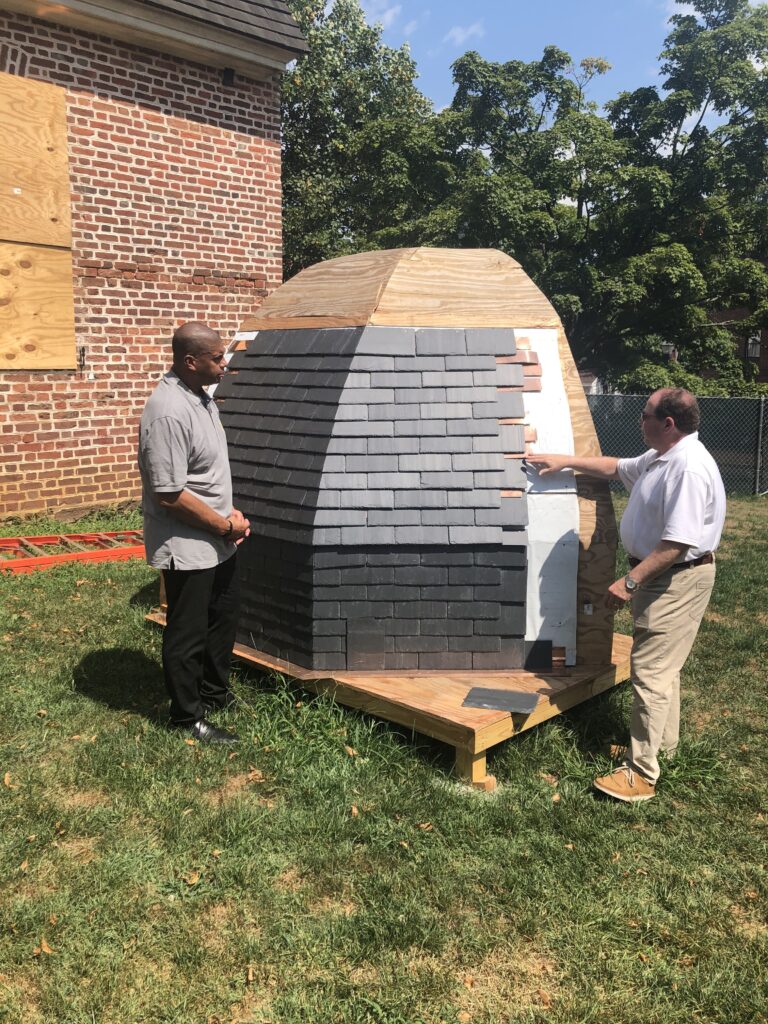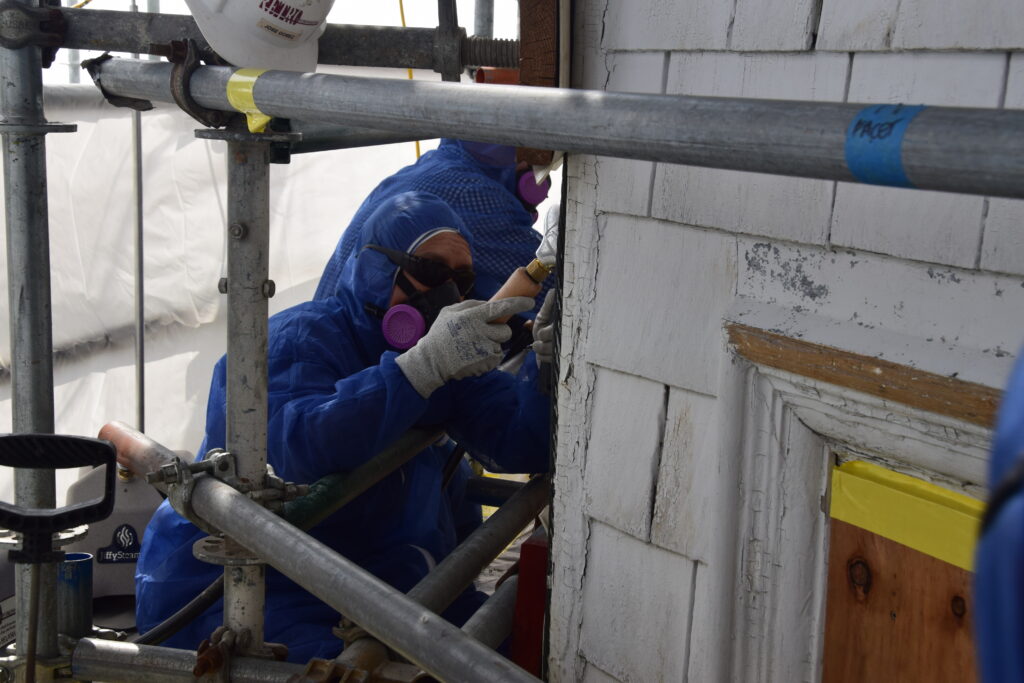UNDER WRAPS

Maryland State House Dome Gets Makeover
By Susan Nolan
The Maryland State House dome dominates the Annapolis skyline and is as much an icon for the state as the blue crab or the black-eyed Susan. In 2000, its likeness was even minted on the quarter.
If you’ve visited Annapolis lately, you have undoubtedly noticed the dome is veiled in scrim and wrapped in scaffolding. It’s the first step in a comprehensive two-phase restoration project that once completed, will touch up the exterior of the State House, the grounds within State Circle and the 1736 Old Treasury Building.
“It’s important that the State House be maintained for future generations and that is what this project is all about,” says Ellington Churchill Jr., Secretary of Maryland’s Department of General Services, the agency responsible for maintaining state-owned facilities. “To our knowledge, this may be the first time all elements of exterior maintenance have been addressed. As the oldest operating state house in the nation, the building deserves that.”
Architect and Senior Project Manager Mark M. Schneidman agrees. “Up until now, exterior maintenance on the building has been piecemeal,” he says. “While this is not a historic preservation project per se, we are respectful of the historic fabric and nature of the project.”
The present State House is the third to occupy State Circle. The first was constructed in 1695 shortly after the capital was moved from St. Mary’s City. A fire destroyed that building in 1704. Five years later, a second State House was completed, but within 60 years, it was deemed too small and rendered obsolete. It was razed and construction began on the current building in 1772. Hurricanes and the American Revolution delayed construction. When the Continental Congress met in Annapolis in 1783, the building was not yet finished.

“This is the second dome for the State House,” says Schneidman. “We have documentation prior to George Washington resigning his commission in 1783 that tells us a French dignitary visited Annapolis and commented on the beauty of the State House’s interior, particularly the Old Senate Chamber. He also commented that the dome was inadequate in size and didn’t let in enough light.” Additionally, the old dome leaked. Timber beams rotted and needed to be replaced.
The exterior of the current dome was completed in 1788 and included the famed Franklin lightning rod, named for its designer Benjamin Franklin, and the original acorn, an almost 5-foot-tall nut-shaped finial that held the lightning rod in place. That original acorn was removed in 1996 and stored at Maryland Archaeological Conservation Laboratory at Jefferson-Patterson Park and Museum in Calvert County. It is now on display at the Museum of Historic Annapolis, located at 99 Main Street.
The interior of the dome was completed in 1794. The project was not without conflict and tragedy. The dome’s architect and designer Joseph Clark quit before the project was completed, and in 1793, plasterer Thomas Dance fell over 90 feet to his death while working on the interior.

Churchill and Schneidman are aware of the dome’s storied history. The Department of General Services is responsible for maintaining 55 buildings belonging to the State of Maryland. Most of these buildings are in Annapolis and Baltimore, and none is more historic than the State House. “We have an historic exemption,” explains Schneidman. “We don’t have to go with the lowest bidder when hiring. We take experience and expertise into account. I meet with the subcontractors, and I know we have highly skilled craftsmen on this job.”
Schneidman describes the restoration crew as “small and highly specialized.” Work is done in a carefully orchestrated sequence and in limited space.
The scaffolding holding the work crew and their equipment is a custom design costing nearly $1 million by itself—and taking months to design and construct. Because it is a separate structure, not attached to the dome, it mitigates some of the stress placed on the dome during the restoration process. “But there is no way to eliminate that stress completely,” explains Churchill. “It’s challenging because the historic timbers do not come with modern weight-bearing calculations.”
“At this point, we have removed 75 percent of the paint. We are using steam only, no chemical paint strippers,” says Schneidman. Wooden elements will be repainted with a linseed oil-based paint as latex paint traps moisture and is not as durable.
Windows have been removed and are being assessed and restored off-site. Like the balusters and other elements, windows must be thoroughly evaluated individually. While some need to be repaired or restored, others may need to be replaced entirely, depending on their condition. “We are finding they are in need of different levels of intervention,” Schneidman says.

All the slate will be replaced. According to Schneidman, some of the slate was installed as recently as 1978, but the details are not historically accurate giving the dome a rougher appearance than it would have had in the 18th century.
Replacing the slate is not the only change that will enhance the dome’s look. The lightning protection system, currently on the exterior, will be relocated to the interior of the dome, and a smaller, less intrusive sprinkler system will replace the existing one.
With so many building elements being moved, discoveries about past restoration projects are continuously being made. Schneidman recently found evidence of work done on the balustrade in 1879—a dated card nailed to the wood and enclosed beneath the metal encasement. “We are partnering with the Maryland State Archives to have the card conserved and replicated,” he states. The 1879 work was previously undocumented.
According to Schneidman, the project is running on time and within budget. Expected completion date for Phase 1? “It will be finished before the end of this calendar year. Definitely in time for the gubernatorial inauguration.”
